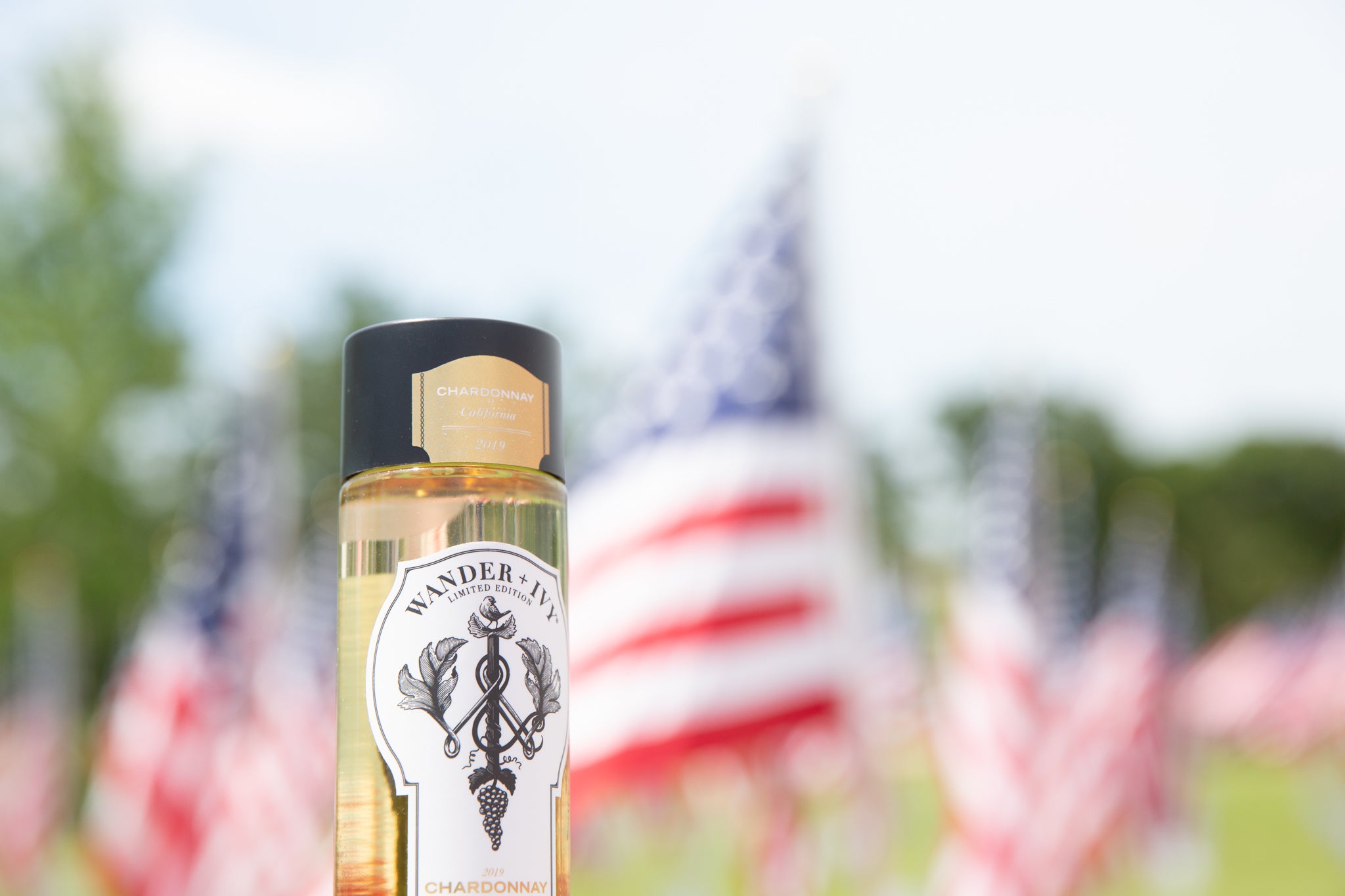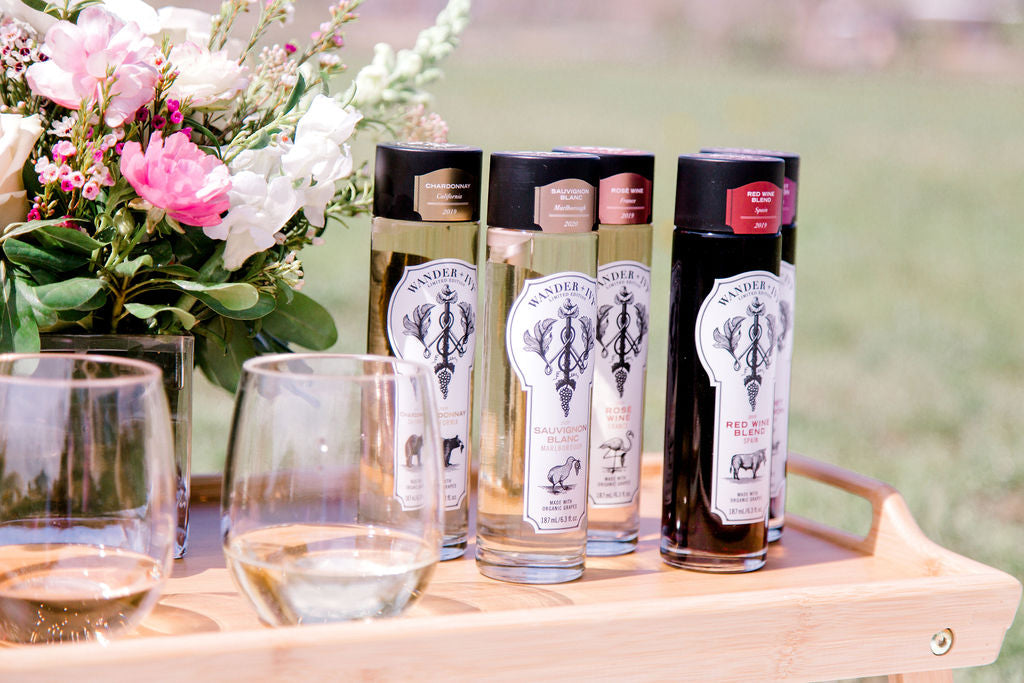
Wine in America!
America the wine consumer, American wine producer! That rhymes right?
All things American wine in today’s post. We’re discussing the history of American wine, how
prohibition impacted the American wine industry, production, consumption, and other quick
facts to impress the people in your life with your American wine knowledge!
A timeline of (early) American Wine:
- The 1500s: Wine originated in the Americas.
- 1628: The first winery came about in New Mexico at a monastery.
- 1787: The first widely produced wine became available in Pennsylvania.
- 1769: The first major winery in California was established, near San Diego.
Prohibition
A huge factor in stifling the wine industry, as well as the alcohol history as a whole, was prohibition in the 1920s. In 1920, prohibition made it illegal to produce any alcohol with the exception of religious or home use. During this time a monastery in New Mexico (the first U.S. winery) kept meticulous records so that when prohibition ended in 1933, people still knew how to make wine.
It took a really long time after prohibition ended for people to start creating quality wine again. After the repeal of prohibition in 1933, 81% of the wine produced was sweet wine. It was produced like this for decades. It was not until the late 1970s and early 1980s when the University of California-Davis as well as some New York Universities got together to start researching the wine industry as a whole, did the quality of American wines start to lift. These universities spent time studying: grape varietals, growing best practices, wine-making methods and history, which really began to elevate the quality of wine that was created in the United States really began to elevate the quality of wine that was created in The United States.
Labeling in the United States
Labeling in the Old World and New World is very different. In the Old World, the label shows the region not the grape of the wine. In the New World (including American Wines), most labels show the grape, not the regions. There are various stipulations around what you can put on labels in the New World.
In order to have an AVA (American Viticultural Area)appear on a wine label, at least 85% of the grapes used to produce the wine must have been grown in the AVA. For a state or county appellation to appear on the wine label, 75% of the grapes used must be from that state or county. California and Washington are both exceptions to this rule. For California, 100% of the grapes have to have been grown in California. For Washington, 85% have to have been grown there. On Wander + Ivy Chardonnay we have California on our label, which means 100% of the grapes used in this varietal were grown in California and the wine was produced there. Additionally, for the grape to be on a label, for bottles with a varietal, at least 75% of the grapes used to make the wine must be of that varietal. There are some exceptions to this. In Oregon, certain varietals like a Pinot Noir 90% must be Pinot grapes for that name to be able to be labeled as an Oregon Pinot Noir.
Knowing some of these labeling parameters can help you be a more informed consumer. Unlike the food industry, there are minimal regulatory requirements that say wines must tell you all the specific ingredients on the back of their labels. Vintage years can also be found on some wine labels. For the wine to have a vintage year on the label, 95% of the grapes have to be from that particular year. When looking at harvest years to see what were great years and which years were not so great, if the wine has the vintage year then you can reference to see how the harvest was for that particular year.
American Wine Production and Consumption
Americans are the #1 consumers of wine in the world, but not the #1 producers. France, Italy, and Spain all come before the U.S. in production, where we fall in as the #4 producer of wine in the world. This will likely evolve over the years, considering how young the wine industry is in The United States. Cabernet Sauvignon and Chardonnay respectively, are the most produced and consumed red and white varietals in America.
There are about 1.1 million acres of grapes within the United States with Cab Sauv having the highest amount of acreage of any varietal.
- Cabernet Sauvignon – 101,300 acres
- Pinot Noir – 61,800 acres
- Merlot – 51,900 acres
- Zinfandel – 47,000 Acres
- Syrah – 22,200 acres
- Pinot Gris – 19,800 acres
American Wine Quick facts
89% of all wine in the U.S. is produced in California.
E. & J. Gallo is the #1 producer of wine in The United States and the world! They produce 2.7% of
all wine globally.
The most expensive wine produced in American is from Harlan Estates in Napa, CA. The
average price is about $1,000 / bottle. If you see Harlan on a restaurant list it can go from
$2500 – $3000.
There are many unique attributes to American wine, including the history! We hope this
provided you with deeper insight on wine in America that you can share with your family and
friends!
Shop all of our single serve wines made with organic grapes on our online wine shop.


